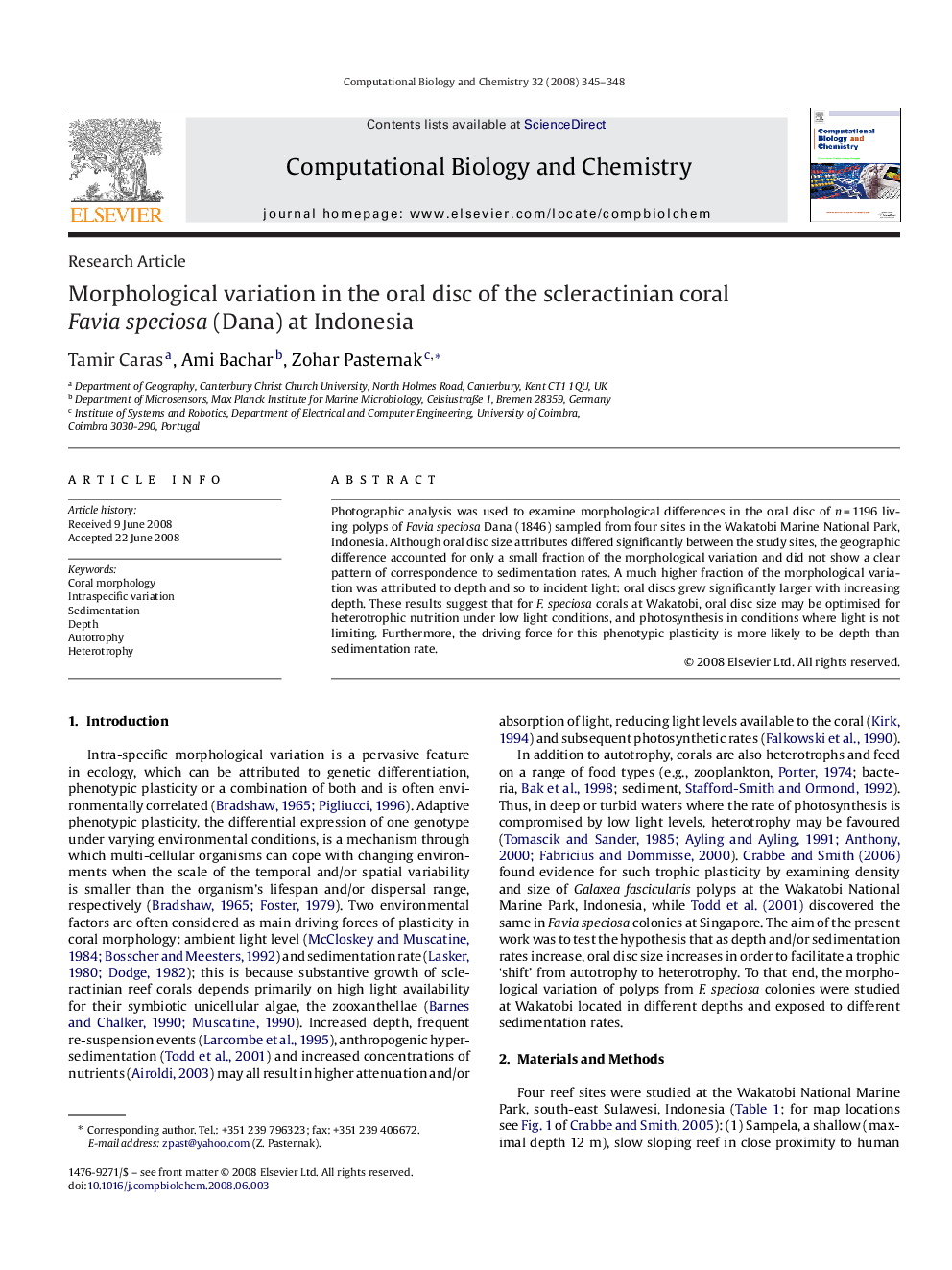| Article ID | Journal | Published Year | Pages | File Type |
|---|---|---|---|---|
| 15476 | Computational Biology and Chemistry | 2008 | 4 Pages |
Photographic analysis was used to examine morphological differences in the oral disc of n = 1196 living polyps of Favia speciosa Dana (1846) sampled from four sites in the Wakatobi Marine National Park, Indonesia. Although oral disc size attributes differed significantly between the study sites, the geographic difference accounted for only a small fraction of the morphological variation and did not show a clear pattern of correspondence to sedimentation rates. A much higher fraction of the morphological variation was attributed to depth and so to incident light: oral discs grew significantly larger with increasing depth. These results suggest that for F. speciosa corals at Wakatobi, oral disc size may be optimised for heterotrophic nutrition under low light conditions, and photosynthesis in conditions where light is not limiting. Furthermore, the driving force for this phenotypic plasticity is more likely to be depth than sedimentation rate.
